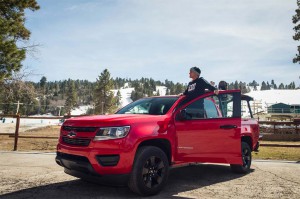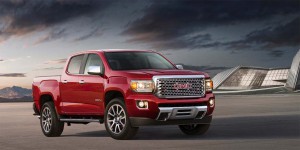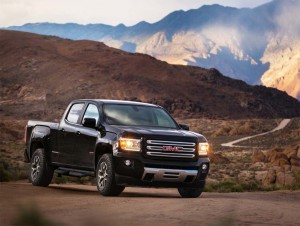
GM is looking to continue the growth of its midsize truck entries, including new marketing campaigns.
General Motors has made some major inroads into the rebounding midsize truck market with the reborn Chevrolet Colorado and GMC Canyon pickups. Now, it’s looking to build even more momentum with a mix of new variants and improved powertrain options.
That includes an all-new V-6 mated with an eight-speed automatic for mainstream Chevy, while the “professional grade” side of the house adds two new models, the GMC Canyon Denali, and the “off-road-inspired” Canyon All Terrain X.
Once written off for dead, the midsize market has shown new life during the last two years, in large part due to the return of the Colorado and Canyon models, analysts contend. In turn, the strong demand for the two GM models “has justified our continued investment in midsize pickups,” said Anita Burke, chief engineer for Colorado.
The Chevy pickup’s sales were up 27% in July compared to the year before. And Chevy is betting it can build even more momentum for 2017 with its new V-6. The second-generation double-overhead-cam engine retains the earlier powertrain’s 3.6-liter displacement. But it adds such performance and mileage enhancing features as cylinder deactivation, which shuts down two cylinders under light power demands. Chevy claims to have improved the engine’s direct injection and variable valve timing, too.
Mated to a new, segment-exclusive eight-speed automatic, the V-6 will make 308 horsepower and 275 pound-feet of torque. GM has not yet released mileage numbers for the new powertrain package, which will land in showrooms during the fourth quarter of 2016.

GMC continues the expansion of its "brand within a brand" with the Canyon Denali edition. Denali vehicles account for about a quarter of all GMC sales.
(GM, U.S. Army team up on fuel-cell powered pickup trucks. For more, Click Here.)
The more upscale GMC Canyon has also scored with midsize pickup buyers, year-over-year sales surging 34% last month.
As has long been anticipated, General Motors’ truck brand will now give the Canyon the high-line Denali treatment. That’s no surprise because GMC has turned Denali into a virtual brand-within-a-brand that now accounts for more than a quarter of its total sales.
“Canyon continues to carve out its own niche as the only premium truck in the midsize segment,” Duncan Aldred, vice president of GMC sales and marketing, said in a statement. “With a broader 2017 Canyon lineup and the redesigned Acadia, GMC is offering more choices for finding the premium truck or SUV that matches customers’ design preferences and capability needs.”
(Click Here for GM’s Barra calming fears about a drop in U.S. vehicle sales.)
The 2017 GMC Canyon Denali adds up-level features such as leather heated and ventilated front seats, a distinctive black interior, unique instruments, a seven-speaker Bose audio system, 4G LTE WiFi and 20-inch aluminum wheels. There’s also forward collision alert and lane departure warning systems.
For those who prefer something a bit more rugged, GMC is adding the Canyon All Terrain X. This model appears to be targeting the midsize pickup segment-leading Toyota Tacoma. It routinely ranks tops with those looking for a serious off-road package.
The All Terrain X gets a new, off-road suspension and transfer case shield, 17-inch aluminum wheels, step bars, Goodyear Wrangler DuraTrac all-terrain tires and all-weather floor mats. There’s also a new Hill Descent Control system and the truck adds a spray-in bedliner.
(GM Q2 earnings double despite sliding sales. Click Here to see the story.)
The GMC models also offer the new 3.6-liter V-6 for 2017.


The small-midsize truck segment didn’t die from customer apathy, it disappeared because manufacturers abandoned it and let it wither and die on the vine. Ford had a great little truck with the Ranger, but failed to update it to make it current. The last real model refresh or redesign for the Ranger was 1998; Chevrolet/GMC redesigned the S-10/S-15 with the dismal 2005 models. These newly redesigned General Motors trucks show that the segment is alive and well, but customers are simply looking for decent product.
My gut says that General Motors is working to build the “Canorado” twins into a formidable brand and build a solid customer base to withstand the inevitable challenge from Ford’s soon-to-return Ranger. Ford used to own the small truck market in the 1980’s and 90’s, and General Motors hasn’t forgotten; there are a lot of very loyal buyers who will wait for a Ford Ranger, and GM will try their damnedest to sway their allegiance before the reborn Ranger arrives. The way it stands, GM has established quite a formidable model segment base with its Midsize trucks, and Ford has its work cut out for itself. The sales of these GM twins proves the viability of the small-midsize truck market.